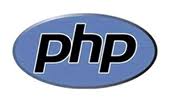
![]() This last week we have been working on a Virtual Earth project with a client who have a large php extranet . As part of the mapping integration we have been helping their developers use the Virtual Earth webservices for Geocoding addresses but there seem to be no up to date code samples for doing this in PHP.
This last week we have been working on a Virtual Earth project with a client who have a large php extranet . As part of the mapping integration we have been helping their developers use the Virtual Earth webservices for Geocoding addresses but there seem to be no up to date code samples for doing this in PHP.
The Soap Options
There are a few options for calling SOAP webservices in PHP, the two most popular seem to be NuSoap and the PHP5 built in SoapClient. Most of the previous PHP examples for calling the older MapPoint web services are using NuSoap I believe because of early issues with the built in SoapClient, so that is where we started.
NuSoap
We managed to get the GetClientToken method working using NuSoap pretty quickly but came across issues when we started trying to call the geocodeservice. Initially we found an issue with the encoding of the SOAP request being rejected by the geocodeservice but after some digging found an option to change it in NuSoap by uncommenting the line "var $soap_defencoding = 'UTF-8';" in nusoap.php.
Once we had that working, we were getting errors suggesting we were not sending a Credentials parameter to the GeoCode method, even though we were. We tried lots of different approaches including creating the SOAP envelope by hand and sending it using NuSoap but nothing seemed to work. So we started again and this time tried the PHP5 built in SoapClient.
PHP5 SoapClient
After converting the code to the PHP5 SoapClient we started to have some joy with the GeoCode method and eventually managed to get it to return a result. With a bit of debugging to see the structure of the result we eventually had access to the GeoCodeResult object and its properties!
So rather than using two different SOAP clients we now changed our GetClientToken code to use the PHP5 SoapClient, but again it didn't exactly go to plan. The PHP5 SoapClient does not seem able to download a password protected WSDL, even when using it's documentation credentials options. We tried putting the username/password in the wsdl url but that didn't work either so eventually we had to download a local copy of the wsdl and use that.
The Final Code
The code is split into two parts, the token request:
//used to get Virtual Earth webservice token, returns token as stringfunction GetToken($vepUID,$vepPWD){//have to use local copy as cannot get php to send credentials to get it from live. See https://bugs.php.net/bug.php?id=27777 for php bug report//remember to update local wsdl when using production$vetsWsdl = 'tokenservice.wsdl';//attempted at sending credentials in url, does work//$vetsWsdl = 'https://' . $vepUID . ':' . $vepPWD . '@staging.common.virtualearth.net/find-30/common.asmx?wsdl';//live url $vetsWsdl = 'https://' . $vepUID . ':' . $vepPWD . '@common.virtualearth.net/find-30/common.asmx?wsdl';//create soap client, setting username and password used when calling method$client = new SoapClient($vetsWsdl, array('login'=>$vepUID,'password'=>$vepPWD,'trace' => 1));//trace allows us to see last response and request for debugging$client_ip = $_SERVER['REMOTE_ADDR'];//wont work for localhost!//$client_ip = '86.17.152.241';//Build the tokenspecification object https://msdn.microsoft.com/en-us/library/cc966768.aspx$tokenSpecification = array('ClientIPAddress' => $client_ip,'TokenValidityDurationMinutes' => 15);$getClientToken = array('specification' => $tokenSpecification);//call GetClientToken method of token service https://msdn.microsoft.com/en-us/library/cc980876.aspx$result=$client->GetClientToken($getClientToken);//Make sure no fault or error has occurred.if ($client->fault){die('Fault occurred using Web Service: '.print_r($res,true));}$veToken = $result->GetClientTokenResult;return $veToken;}
and the GeoCode request:
//Virtual Earth Platform ID goes here.$vepUID = 'YOURUSERID';//Virtual Earth Platform password goes here.$vepPWD = 'YOURPASSWORD';
$veToken = GetToken($vepUID,$vepPWD);//call token function//Get geocode$vegWsdl = 'https://staging.dev.virtualearth.net/webservices/v1/metadata/geocodeservice/geocodeservice.wsdl';//live url $vegWsdl = 'https://dev.virtualearth.net/webservices/v1/metadata/geocodeservice/geocodeservice.wsdl';//Create soap client$client = new SoapClient($vegWsdl, array('trace' => 1));//trace allows us to see last response and request for debugging//create credentials object and fill properties https://msdn.microsoft.com/en-us/library/cc966923.aspx$credentials = array('Token' => $veToken);//set geocoding query$query = 'SG15 6YF, uk';//create geocoderequest object and fill properties https://msdn.microsoft.com/en-us/library/cc980924.aspx$geocodeRequest = array('Credentials' => $credentials,'Query' => $query);
//build geocode methods 'request' parameter$geocode = array('request' => $geocodeRequest);
//call web service method called GeoCode https://msdn.microsoft.com/en-us/library/cc966817.aspx$result=$client->Geocode($geocode);//Make sure no fault or error has occurred.if ($client->fault){die('Fault occurred using Web Service: '.print_r($res,true));}//Get GeocodeResponse object from $result https://msdn.microsoft.com/en-us/library/cc980928.aspx//get first GeocodeResult object as there will be more than one, starting with the most relevant. https://msdn.microsoft.com/en-us/library/cc980950.aspx//get the GeocodeLocation object https://msdn.microsoft.com/en-us/library/cc966778.aspx//get the Latitude valueecho $result->GeocodeResult->Results->GeocodeResult[0]->Locations->GeocodeLocation->Latitude . '<br />';//get the Longitude valueecho $result->GeocodeResult->Results->GeocodeResult[0]->Locations->GeocodeLocation->Longitude . '<br />';
Final Thoughts
It's been a long time since we have done any real PHP coding and the one thing this exercise has reminded us is just how far .Net has come over the years compared to PHP. What would take minutes to do in .Net has taken hours to figure out and debug in PHP, and with no strongly typed objects it was even more difficult to get at the result objects. But we do not claim to be PHP experts, maybe there are easily and less taxing ways to achieve this, we would love to hear if you know more!
